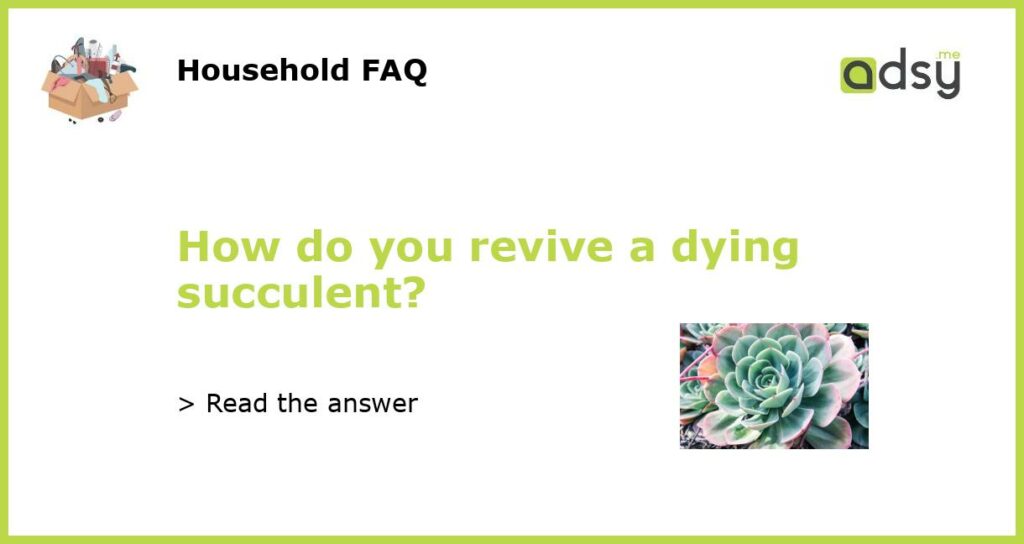Identify the Problem
If you notice that your succulent is dying, the first step to reviving it is to identify the problem. Succulents can suffer from a variety of issues, including over watering, under watering, poor soil drainage, lack of sunlight, pest infestations, or disease. By carefully examining your plant and assessing its growing conditions, you can determine the underlying cause of its decline.
Adjust Watering Practices
One common reason for succulent death is over watering. These plants have adapted to thrive in arid conditions and do not fare well with excessive moisture. If you suspect over watering is the culprit, reduce the frequency of watering and allow the soil to dry out between waterings. It is important to strike a balance, as under watering can also lead to plant decline. Be sure to water your succulents thoroughly when you do water, allowing the water to drain out of the bottom of the pot.
Improve Soil Drainage
Inadequate soil drainage can also contribute to the decline of succulents. These plants prefer loose, well-draining soil that allows excess water to easily flow through the roots. If you notice that your succulent is sitting in water for extended periods or the soil remains wet for days after watering, it may be time to improve the soil drainage. Add pumice, perlite, or coarse sand to the potting mix to create a more porous substrate that allows water to quickly drain away.
Evaluate Sunlight Exposure
Succulents require bright, direct sunlight for several hours each day to maintain their health and vibrant color. If your succulent is not receiving enough sunlight, it may become weak and stretched out, or “etiolated.” Assess the sun exposure in its current location and consider moving it to a spot with more light. Place the succulent near a south-facing window or provide it with artificial grow lights to ensure it receives adequate light for photosynthesis.
Treat Pests and Diseases
Pest infestations and diseases can also cause succulents to deteriorate. Common pests that affect succulents include mealybugs, aphids, and scale insects. If you notice signs of pest activity, such as sticky residue, webbing, or tiny insects on your plant, take immediate action to control the infestation. Use organic pest control methods or insecticidal soap to remove the pests from your succulent. Additionally, if you suspect your succulent has a disease, such as root rot or fungal infection, consult a plant specialist or horticulturist for guidance on appropriate treatment options.






